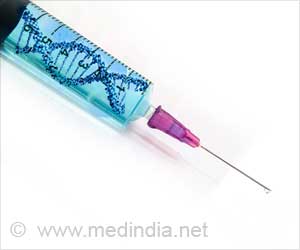Those children were unable to speak, feed themselves or hold up their head. Six of the children were treated at UCSF and one at Ohio State Wexner Medical Center. They experienced improved motor function, better mood, longer sleep, and were able to interact more with their parents and siblings.
‘The novel gene therapy method promises to transform the treatment of rare genetic and neurodegenerative disorders in children.’
Oculogyric crisis, a typical feature of this disorder presented as a long involuntary upward fixed gaze with seizure-like episodes also ceased in all children involved in the trial expect one.
Only 135 children worldwide are affected with this condition and Asian descent people are more likely to get affected. The trial is borrowed from gene delivery techniques used to treat Parkinson’s disease.
Both conditions are associated with deficiencies of AADC, which converts levodopa into dopamine, a neurotransmitter involved in movement, mood, learning and concentration.
“Children with primary AADC deficiency lack a functional copy of the gene, but we had presumed that their actual neuronal pathway was intact,” said co-first author Nalin Gupta, MD, PhD, of the UCSF Department of Neurological Surgery and the surgical principal investigator.
In Parkinson’s disease the neurons producing dopamine undergo degeneration and so the trial is focused on the putamen, a part of the brain that plays a key role in this degeneration.
Whereas in AADC gene therapy trial the neurons in the substantia nigra and ventral tegmental area of the brainstem were targeted for more therapeutic benefits. So, the approach for treating AADC deficiency is more straightforward than Parkinson’s treatment approach.
Patients with AADC deficiency are usually treated with medications used for Parkinson’s disease to increase dopamine, melatonin for sleep disturbances and benzodiazepines to relieve oculogyric crisis for limited success.
During the gene therapy surgery, physicians infuse a benign virus programmed with specific DNA into precisely targeted areas of the brain and monitored using a real-time MRI imaging.
The PET imaging taken after gene therapy trial shows increased AADC activity in brain and elevated concentrations of neurotransmitter metabolites from the cerebrospinal fluid.
In the following months, many children only started to laugh with improved mood but also some started to speak and even walk.
Significant improvements were reported by parents and caregivers in sleep as well as in feeding difficulties. The procedure was tolerated well without adverse effects, but one child died at seven months after surgery.
The researchers are planning to start two new gene therapy trials using the same surgical techniques and viral vector for early Alzheimer’s disease and multiple system atrophy, a rare neurodegenerative disorder.
Source: Medindia



